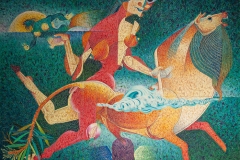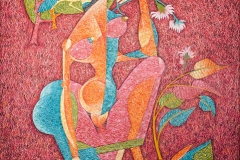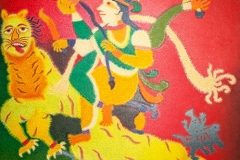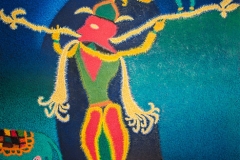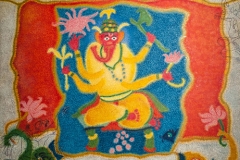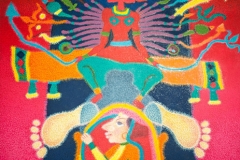
C D Mistry
Introduction
C. D. Mistry is amongst India’s most acclaimed visual geniuses, so recognized from his earliest exhibition in 1962. His unique imagery and meticulous skill have won him many prestigious awards, including the National Lalit Kala Academy Award, the Gaurav Puraskar Award, State Lalit Kala Academy Awards and many more. His creations appear within the most astute collections including the Birla Museum, the Air India Collection, the Modern Art Gallery, the Reliance Industries Collection, and within the Kirloskar Bengaluru, Kumar Mangalam and Aditya Birla Collections.
50 years of C. D. Mistry (b.1933, Navsari, Gujarat)
Many artists simply sail with the tides, while very few plunge into the depth of the ocean to emerge as masters of their craft. Mistry chose to explore a highly original path generating his magnificent signature works of gods and goddess, ranging from miniatures to grand phantasmagorical-world landscapes. During this festive season, he completes fifty years of work with this last show at the India House Art Gallery, revealing some of his finest creations. Divinity and Energy is a new series of his works capturing the invisible energy in a divine form. Energy is manifested as the balancing force that carefully harmonizes the order of the world, creating a dynamic tension between the forces of good and evil; or the positive and the negative. Mistry’s bold colors and refined craftsmanship, developed over decades of intense exploration, come to a point of confluence that one sees in this collection of his latest works.
Two aspects distinguish master painters from the ordinary; those are great skill and creative exuberance. Hailing from a tradition of craftsmen, Mistry holds skill in his blood, which he complements with innovative compositions, empowered by his formal education and his unique interpretations of reality. So when one studies his paintings carefully one notices this symbiosis of creativity and skill woven into a fine imaginative fabric.
His wanderings abroad and within India’s villages have gifted him with an innate sense of folk motifs and primordial imagery that energizes his paintings. Explorations of wall paintings in villages and slums, studies of cloth paintings by unknown craftsman, reflections on mirror work in textiles and mud walls, a love for popular prints of gods and goddesses, analysis of small temples and their intricate rituals have deeply enriched his intellectual milieu. All these facets have been sketched and documented in his vigorous style, and incorporated in his unique manner within his paintings. He humbly says, “I gathered tremendous wealth from sketching diverse folk art forms; all these forms helped me in conceptualizing my paintings.”


